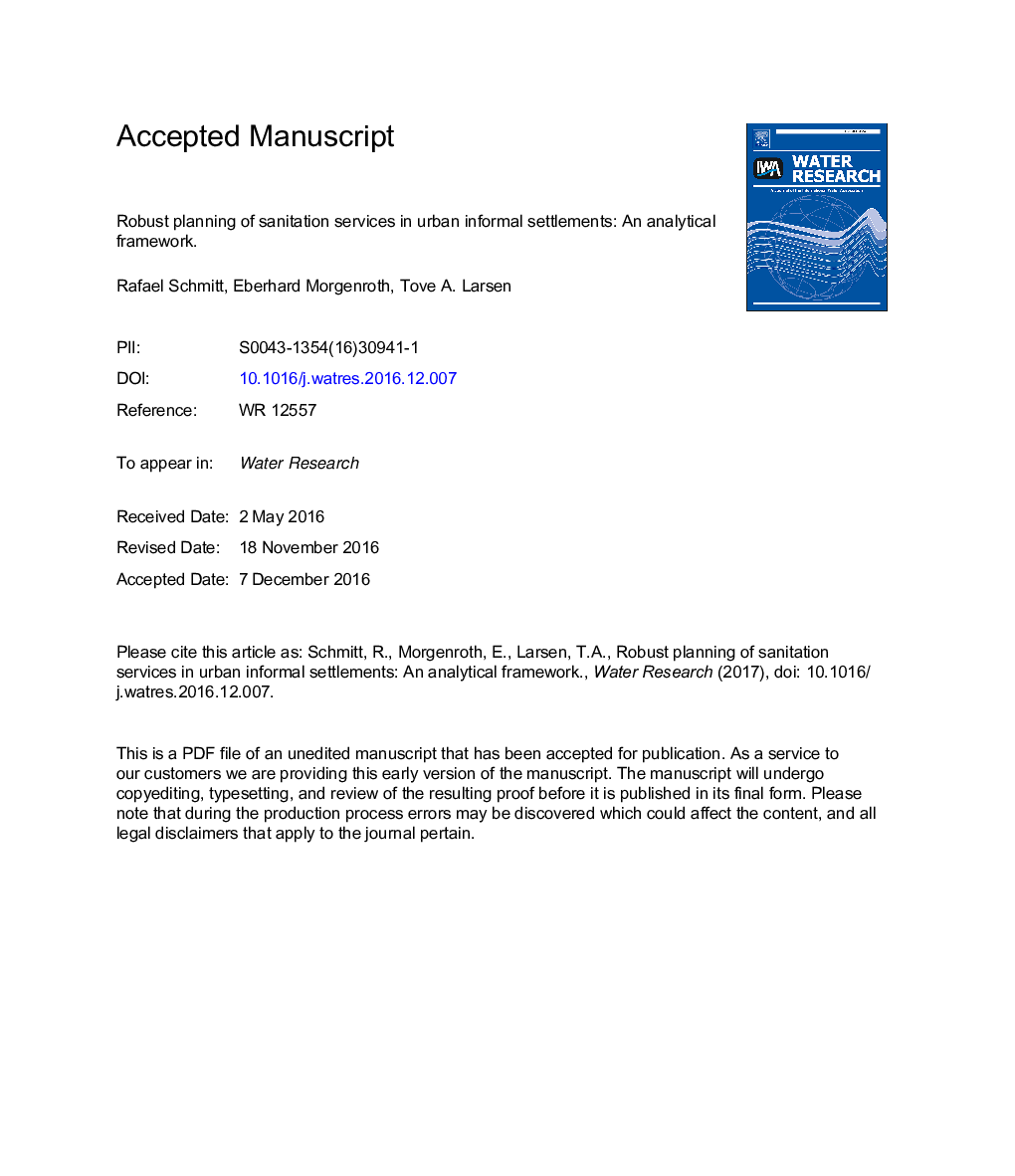| Article ID | Journal | Published Year | Pages | File Type |
|---|---|---|---|---|
| 5758977 | Water Research | 2017 | 44 Pages |
Abstract
New types of sanitation services are emerging to tackle the sanitation crisis in informal settlements. These services link toilet facilities to semi-decentralized treatment plants via frequent, road-based transport of excreta. However, information for the planning of such sanitation services is scarce, and their future operating conditions are highly uncertain. The key questions of this paper are therefore: a) what are the drivers behind success or failure of a service-based sanitation system in informal settlements and b) on what scales and under which conditions can such a system operate successfully? To answer these questions, already at an early stage of the planning process, we introduce a stochastic model to analyze a wide range of system designs under varying technical designs, socio-economic factors, and spatial condition. Based on these initial results, we design a sanitation service and use the numeric model to study its reliability and costs over a wide range of scales, i.e., system capacities, from very few to many hundred users per semi-decentralized treatment unit. Key findings are that such a system can only operate within a narrow, but realistic range of conditions. Key requirements are toilet facilities, which can be serviced rapidly, and a flexible workforce. A high density of facilities will also lower the costs. Under these premises, we develop a road-based sanitation service and model its functionality in different settings and under many scenarios. Results show that the developed sanitation system using a single vehicle is scalable (100-700 users), can provide reliable service, and can be cheap (<1.5 c/p/day). Hence, this paper demonstrates opportunities for road-based sanitation in informal settlements and presents a quantitative framework for designing such systems.
Related Topics
Physical Sciences and Engineering
Earth and Planetary Sciences
Earth-Surface Processes
Authors
Rafael J.P. Schmitt, Eberhard Morgenroth, Tove A. Larsen,
